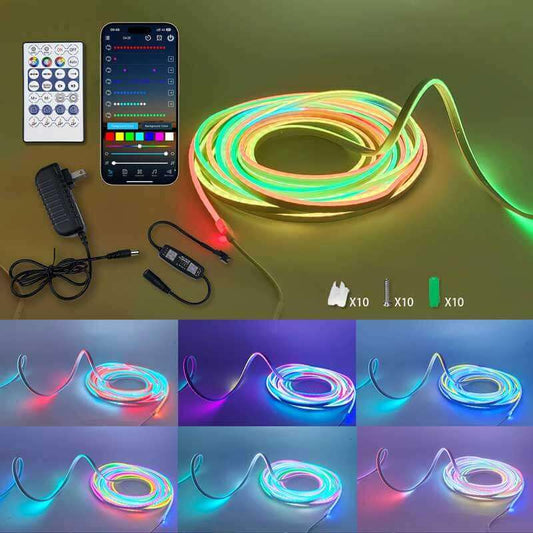How do I install PlayStation Portable games?
Share
The PlayStation Portable (PSP) is a handheld gaming console from Sony that became incredibly popular for its portable gaming experience. However, with the PSP now discontinued, playing games on the device can be a bit tricky. If you still have your PSP or are looking to play PSP games, you’ll need to know how to install them onto your device. Below, we’ll walk you through the steps on how to install PSP games, either from a physical UMD disc or from downloadable files.
1. Installing PSP Games from UMD Discs
If you have a physical UMD (Universal Media Disc) game, installing the game onto your PSP is quite simple:
Steps:
- Insert the UMD Disc: Insert the PSP game UMD disc into your PSP’s UMD slot.
- Turn on the PSP: Power on the PSP and go to the main menu (XMB).
- Navigate to the Game Menu: Use the D-pad to scroll to the “Game” tab on the XMB (the main screen).
- Select the UMD: Under the “Memory Stick” option, you should see your UMD listed. Click on it to start the game.
- Play the Game: Your PSP will automatically load the game, and you can start playing.
2. Installing PSP Games from a PC (Via USB)
If you want to install PSP games that you’ve downloaded or transferred from your PC, you can do so using a USB cable.
What You Need:
- A PSP (with firmware that supports homebrew or game installation).
- A USB cable (to connect the PSP to your PC).
- A computer with the downloaded PSP game files (either in .iso or .cso format).
Steps:
-
Prepare the Files:
- Ensure that the PSP game files are in .iso or .cso format. These are the formats used for PSP games that can be installed onto the memory stick.
- If your files are in a different format, you may need to convert them to .iso or .cso using third-party software.
-
Connect the PSP to Your PC:
- Use the USB cable to connect your PSP to your computer.
- On your PSP, go to Settings > USB Connection to enable file transfer.
-
Navigate to the PSP Memory Stick:
- On your PC, open “My Computer” (or “This PC” on newer Windows versions), and you should see your PSP appear as a storage device.
- Open the PSP folder, and then navigate to the GAME folder.
-
Transfer the Game:
- Copy the PSP game file (.iso or .cso) to the GAME folder on your PSP’s memory stick.
- Ensure the file is directly placed in the GAME folder, not in any subfolders.
-
Disconnect and Play:
- Safely eject your PSP from the computer and disconnect the USB cable.
- Go to the Game tab on your PSP and navigate to “Memory Stick”.
- You should see the game listed there. Click on it to start playing.
3. Installing PSP Games from a Custom Firmware (CFW)
Some PSP users may want to install games through custom firmware (CFW) to bypass limitations or to play backups. CFW allows for a wide range of customization, including the ability to run downloaded PSP games. However, be aware that installing CFW can void your warranty, and there may be legal implications regarding piracy if you’re downloading games you do not own.
Steps:
-
Install Custom Firmware (CFW):
- First, you will need to install custom firmware on your PSP. This process involves using a custom recovery tool to flash the CFW to your PSP.
- Many online guides are available to help you install CFW based on the specific model and firmware version of your PSP.
-
Download PSP Games:
- Once you have CFW installed, you can download PSP games from various sources (make sure they are legal copies or you own the rights to the games).
- Games should be downloaded in .iso or .cso formats.
-
Transfer to Memory Stick:
- Follow the same steps as above (via USB connection) to transfer the downloaded .iso or .cso files to your PSP’s GAME folder.
-
Launch the Game:
- After transferring the games, go to the Game tab, select “Memory Stick”, and you should see the game listed. Click on it to start playing.
4. Playing PSP Games on Your PC Using an Emulator
If you don’t have a PSP but still want to play PSP games, you can use a PSP emulator on your PC. This allows you to run PSP games on your computer without needing the actual hardware.
Popular PSP Emulator:
- PPSSPP: PPSSPP is the most popular PSP emulator for PC, Android, and iOS. It runs PSP games in high resolution and supports .iso and .cso files.
Steps:
-
Download the Emulator:
- Visit the PPSSPP official website and download the version for your operating system (Windows, macOS, or Linux).
-
Install the Emulator:
- Follow the on-screen instructions to install PPSSPP on your computer.
-
Obtain PSP Game Files:
- Download PSP games in .iso or .cso format from a legal source.
-
Load the Game in PPSSPP:
- Open PPSSPP and navigate to File > Load to select the game file you downloaded.
- The game should start running within the emulator, and you can start playing on your PC.
5. Using PlayStation Store (PSP Titles)
Some PSP games are still available for digital download via the PlayStation Store, but the PSP is no longer supported by Sony for direct game downloads. However, you can use a PS3 or PS Vita to purchase and download PSP games, and then transfer them to your PSP via USB.
Conclusion
Installing PSP games can be done through various methods, including using UMD discs, transferring files via USB, or utilizing custom firmware. Whether you still own a PSP or want to play on an emulator, these methods provide you with multiple ways to enjoy your favorite PSP titles. Just make sure to always follow legal guidelines when downloading and transferring games to your device. Happy gaming!




